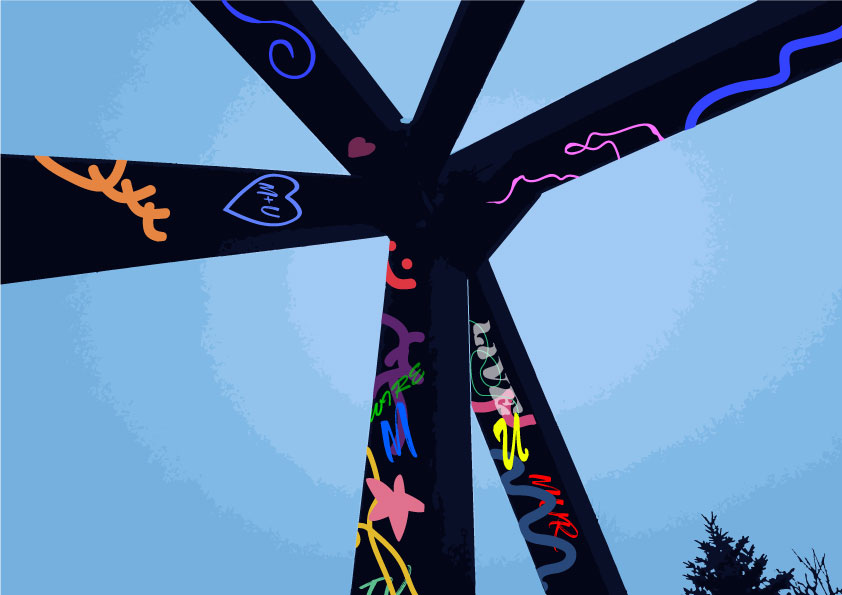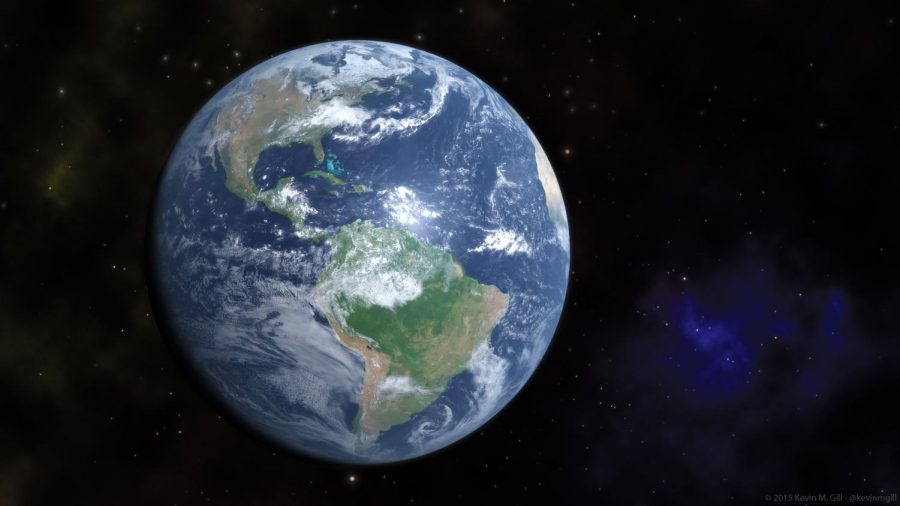My boyfriend used to live in an apartment building where there was a dinky little elevator with flowers, initials and other nonsense scratched into the back of the door. Whenever we would take the elevator up to his apartment, the door served as a backdrop to us and several others who had traveled up the floors, a physical reminder of who had been there.
Eventually, I’m not quite sure how, but there was an L + A scratched into the elevator door by the time he moved out of the building.
People want to leave their mark on the world and the evidence is all around us.
The tables in the Brew Bayou have messages like Bible verses or “Same-Sex Dorms Suck” as a physical remembrance of those who sat staring out the same windows I look out. There’s an exhibit in the Milwaukee Art Museum where if you stand long enough on the tiles, your shoes will imprint on the metal as you literally walk across the footsteps of another person.
Humans have the will to live forever. Yet there is no mythical alchemy that will promise us a fate extracted from death, and there is no philosopher’s stone. We already possess the ability to immortalize ourselves.
It is through the physical mark we can leave on the world — a testament to our own humanity. Making our mark has been around for thousands of years, back to before we even started writing down our history. My favorite manifestation of our immortality is the Lascaux Cave in Southern France.
The Lascaux Cave was found by accident by four teenagers and a dog named “Robot” in 1940 who entered the cave, finding prehistoric cave paintings that were mostly of animals like oxen and horses. However, there was one cave painting comprised of hand stencils.
There’s much debate over the hands that remain in Lascaux and what they truly mean, and like all art, it’s up for interpretation. I believe that when the person imprinted their hand, not yet knowing that it would be there for thousands of years to come, the message they were sending said “I was here.”
In the novel “The Invisible Life of Addie LaRue” by V.E. Schwab, the titular character is cursed to never be remembered once a person turns away from her in exchange for immortality. Yet, her existence is still documented in artwork.
Her seven freckles, reminiscent of a constellation, appear on various artistically interpreted women over three hundred years, yet her face is never recognizable. Addie existed and was documented, but she was unknown.
Like many of the marks that I have left, whether it be in a geocache off of 76th Street or an Oscar Wilde quote that I wrote on the bathroom stall of Mayfair Mall’s Barnes & Noble, I will not be remembered.
I think that’s one of the most intriguing parts about our immortality that I would argue — the mystery of it all. We may never know exactly why the people 17,000 years ago in the Lascaux Cave chose to paint their images and I may never know why there are photos of Baby Keem posted all around Schroeder Hall like a hidden scavenger hunt. The speculation doesn’t matter though, because it exists and it’s a mark of who was there before us.
It is utterly sublime to be in a world where our work and our creations may be lost to all memory, yet it still exists. Humans have a desire to be remembered, but I don’t think it is the person that would be remembered. Instead it will be our physical remembrance, whether it be painted on canvas, etched into stone or carved into wood.
I will personally not be remembered and that’s okay. Because my mark will be. My mark will still be there.
You can paint over writing, you can sand down a table, you can fill in scratches. Whatever was covered up though still existed and therefore will be immortal.
This was written by Laura Niezgoda. She can be reached at laura.niezgoda@marquette.edu.




